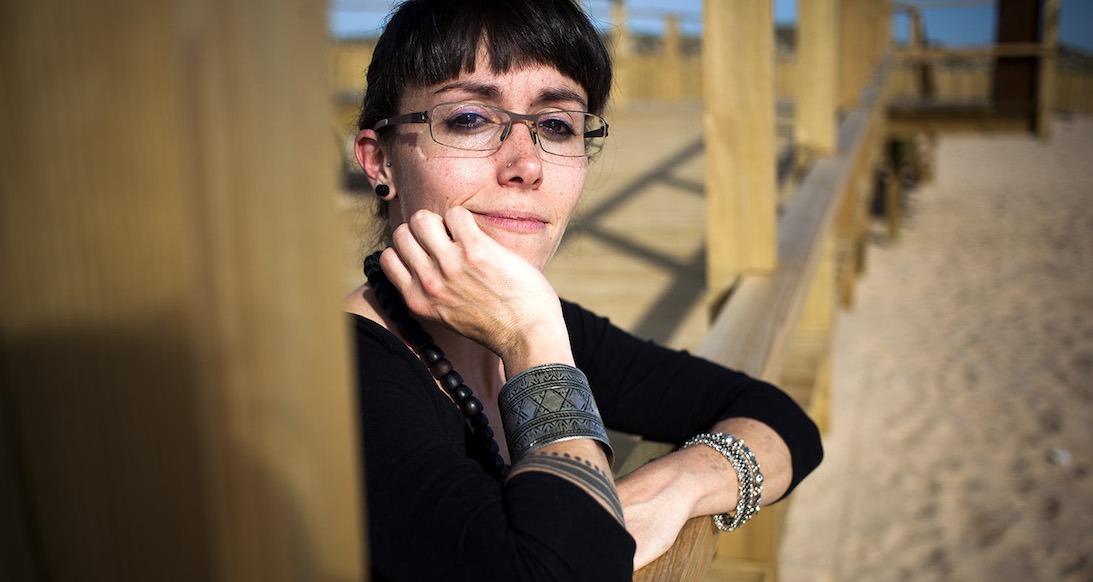Joana Pechém, 34, from Albufeira (Algarve), is a keeper at CNRLI since 2009.
Joana works in CNRLI since 2009, when it started. She helped furnish the enclosures for the arrival of the first lynx. Before this she volunteered in Bolivia in a refuge for rescued wildlife, such as parrots, ocelots and monkeys. She even strolled pumas with ropes to improve animals’ quality of life.
Before start working at the Centre, the Iberian-lynx was an almost mystical figure for Joana. “I have always been curious about the species and I knew the story of its conservation. I remember I collected the newspaper clippings with news about lynx and recorded the news in VHS cassettes.”
The first Iberian-lynx she saw was Morena. It was in Doñana (Andaluzia, Spain). Morena was a 20 years lynx. It had an amazing snout and a very peculiar face with big eyes and beards. I was thrilled. Its eyes surpassed my expectations.” Once they surprised each other in the enclosure. “I entered the enclosure and I didn’t see her, half hidden in the vegetation. Nor did she notice me because it already had bad hearing. We almost bumped into one another. We were both scared!”
After all these years as a keeper, Joana learned many things, such as lynx are very different from one another. “I try not to enter the same space of more confident and aggressive lynx, but I know I can enter the enclosures of the most shy and quiet ones. I have already cleaned a brood box with Bisnaga siting on the structure.” Esperança often approaches the net when she sees her and it was the first lynx to give her a cuddle.
Another thing she learned was that lynx might be less lonely than previously thought. “I have seen interaction between couples. They play hide-and-seek, even adults. Lynx purr and “knead” like cats. And Juromenha likes to play with water like a dog. But when they feel threatened they open the beards and bristle the fur. Sometimes they give pawing on the net and make grunts and growls. They have to be confident in their space. We don’t impose them anything and there are no power games.”
While a keeper, Joana has her moments of complete happiness. “Sometimes I lose myself when I observe some curious behaviour. I stay there watching them. And births and reintroductions in nature are always exciting moments.” Some of her favourite moments are when she feeds the lynx on summer afternoons, “when they are more relaxed, more confident and are closer. It is very rewarding.”
But you need to create barriers. “It is very frustrating when you release an animal and it dies in the field. I feel angry when everything ends in such an absurd way.”
After so many hours at CNRLI, will work with lynx become a routine? “In a way, we tend to look at it as if it were any other species. But our commitment is to take care of animals, always giving our best.”
To Joana, the Iberian lynx is a special, charismatic animal. “It is a perfect flag species. It is the very mystery of nature. I believe it is an ambassador. Investing in it is to invest in all other species that depend on the same habitat. Lynx is a driver of change in conservation in general. The history of the world is made of things like these; it takes time but I believe we will get there.”
[divider type=”thick”]The Birth of an Iberian-Lynx
A team from Wilder has been at CNRLI for two days on March 2015. In this series we show you how is it to work at this centre and all the people who take care of this endangered species.



